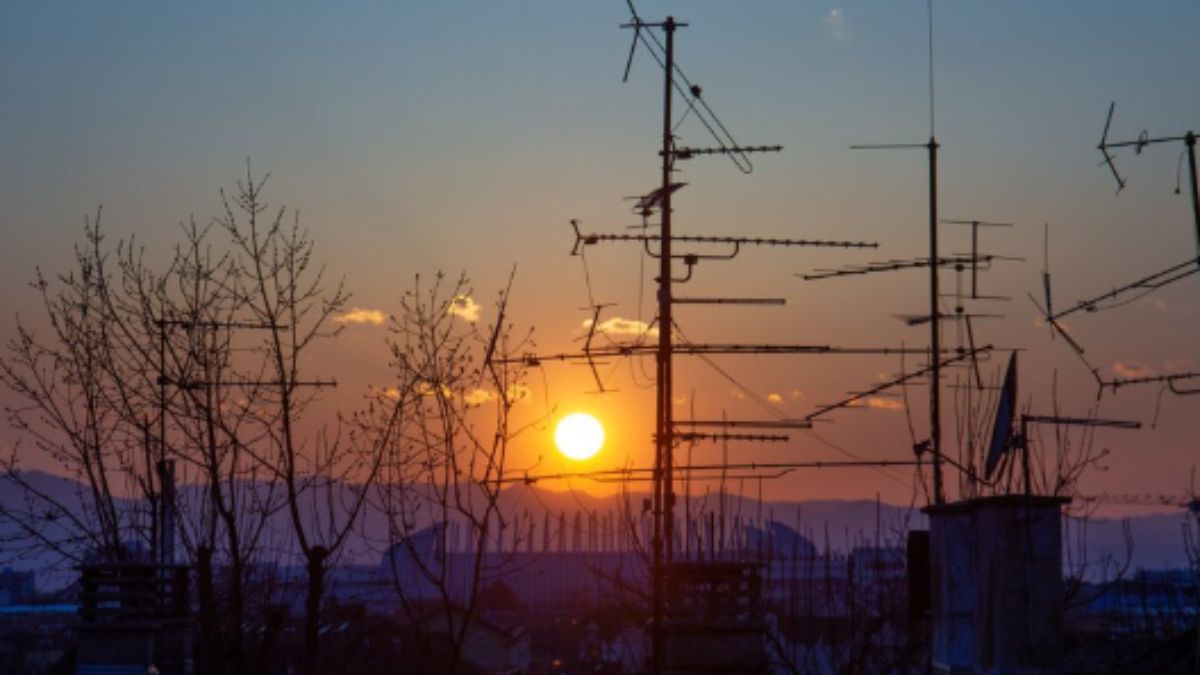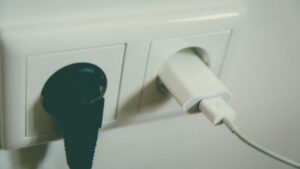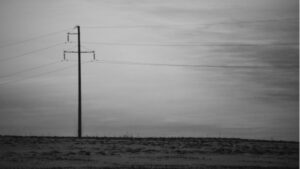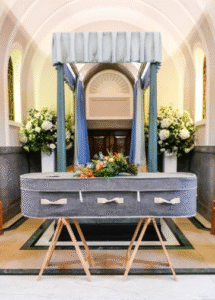Topic
Teacup Poodles: The Perfect Companion for Apartment Living

Are you looking for a furry friend to share your cozy apartment with? Look no further than the delightful teacup poodle! These pint-sized pups pack a whole lot of love and companionship into their tiny frames. In this blog post, we’ll explore everything you need to know about teacup poodles – from their history and characteristics to why they make the perfect apartment companion. So, grab a cup of tea (or coffee) and let’s dive into the wonderful world of teacup poodles!
A Quick Look at Teacup Poodles
Teacup poodles are like a delightful pocket-sized package of joy. These tiny pups typically weigh between 2-4 pounds and stand around 6-9 inches tall at the shoulder. Despite their small stature, they have big personalities that will fill your heart with warmth.
Originating from Germany, teacup poodles were bred down in size from standard poodles to create these adorable companions. Their compact size makes them ideal for apartment living or for those with limited space.
With their curly coats that come in various colors like white, black, apricot, and silver, teacup poodles are not just cute but also hypoallergenic. This means less shedding and more snuggles without the sneezes!
The History of Teacup Poodles
Teacup Poodles have a fascinating history that dates back to the 18th century in Europe. These tiny pups were bred down from standard-sized Poodles to create a smaller version that became popular among royalty and nobility. Renowned for their intelligence and charming personalities, Teacup Poodles quickly gained popularity as companions to the elite.
The miniature size of Teacup Poodles made them ideal lap dogs, often seen accompanying their owners at social events and gatherings. Their elegant appearance and playful demeanor endeared them to many, leading to their widespread admiration across different social classes.
Despite their diminutive stature, Teacup Poodles retained all the qualities of their larger counterparts, including loyalty, agility, and versatility. Over time, these pint-sized canines continued to capture hearts around the world with their endearing nature and impressive abilities.
Teacup Poodle Characteristics
Teacup Poodles are known for their dainty size and charming appearance. These pint-sized pups typically weigh between 2 to 4 pounds, making them one of the smallest dog breeds in the world. Their coats come in various colors such as white, black, apricot, and silver – each adding to their undeniable cuteness.
Despite their small stature, Teacup Poodles are filled with personality. They are intelligent, lively, and eager to please their owners. Their affectionate nature makes them wonderful companions for singles or families alike. Due to their alertness and quick wit, they excel in training sessions – whether it’s learning new tricks or mastering obedience commands.
One distinctive trait of Teacup Poodles is their hypoallergenic coat that sheds minimally. This makes them a great choice for individuals with allergies who still want a furry friend by their side. In addition to being hypoallergenic, these tiny dogs have an elegant posture and confident demeanor that never fails to capture hearts wherever they go.
Size and Coat Type
Teacup Poodles may be small in size, but they are big on personality. These pint-sized pups typically weigh between 2-4 pounds and stand around 6-9 inches tall at the shoulder. Despite their tiny stature, Teacup Poodles have a luxurious coat that comes in various colors such as white, black, apricot, and silver.
Their hypoallergenic fur is curly and dense, requiring regular grooming to prevent matting. This breed sheds minimally and is considered a good option for allergy sufferers. Their elegant appearance often turns heads wherever they go – whether it’s out for a stroll in the park or cuddled up on the couch at home.
The size of Teacup Poodles makes them an excellent choice for apartment dwellers or those with limited space. Their compact build allows them to thrive in smaller living environments while still enjoying playtime indoors or short walks outside.
Temperament and Affection
When it comes to temperament and affection, teacup poodles are known for their loving and loyal nature. These pint-sized pups have big hearts and thrive on human companionship. They are affectionate creatures that form strong bonds with their owners, often becoming a constant source of love and joy in their lives.
Teacup poodles are intelligent dogs that are eager to please, making them relatively easy to train. Their playful demeanor and friendly disposition make them wonderful companions for families of all sizes. Despite their small size, they are confident little dogs who enjoy being social and interacting with people of all ages.
Due to their affectionate nature, teacup poodles can be prone to separation anxiety if left alone for long periods. It’s important for owners to spend quality time with these fluffy companions to ensure they feel secure and loved at all times. Whether curling up on your lap or playing fetch in the park, teacup poodles will always show you unconditional love and unwavering loyalty.
Teacup Poodles as Apartment Dogs
Teacup Poodles are the perfect companions for apartment living due to their small size and adaptable nature. These pint-sized pups are known for their intelligence, making them easy to train in indoor spaces. Despite their tiny stature, Teacup Poodles have big personalities that can brighten up any apartment setting.
Their minimal shedding coats make them great for indoor environments, requiring regular grooming to keep them looking their best. Teacup Poodles thrive on human companionship and love being close to their owners, making them ideal roommates for those living in smaller spaces.
With proper exercise and mental stimulation, these little dogs can be content and well-behaved apartment dwellers. Their affectionate nature means they’ll happily curl up next to you on the couch or follow you around the apartment as your loyal shadow.
Teacup Poodles as Service Dogs
Teacup Poodles possess a remarkable ability to excel as service dogs, despite their small size. Due to their intelligence and eagerness to please, they can be trained for various tasks that assist individuals with disabilities. From guiding the visually impaired to providing emotional support for those struggling with anxiety or PTSD, these pint-sized pups showcase unwavering loyalty and dedication in their role as service animals.
Their compact size makes them ideal for living in smaller spaces often associated with individuals who require assistance. Teacup Poodles’ alert nature allows them to quickly respond to emergencies or signals from their owners, making them invaluable companions in times of need. Additionally, their hypoallergenic coat minimizes shedding, reducing potential allergens for those with sensitivities.
The adaptability and innate abilities of teacup poodles make them exceptional candidates for serving as loyal and dependable service dogs across a wide range of specialized roles.
Caring for a Teacup Poodle
Caring for a Teacup Poodle involves attention to their specific needs. Due to their small size, they require regular grooming to keep their coat healthy and free of mats. Brushing them a few times a week and scheduling professional grooming sessions is essential.
Teacup Poodles are energetic little dogs, so providing them with daily exercise is key to keeping them happy and healthy. Short walks or playtime indoors can help burn off some of that energy.
Feeding your Teacup Poodle a balanced diet tailored to their size and activity level is crucial. Be mindful of portion sizes as overfeeding can lead to obesity, which can be detrimental to their health.
Regular visits to the veterinarian for check-ups and vaccinations are necessary for maintaining your Teacup Poodle’s well-being. Keep an eye out for any changes in behavior or appetite that could signal an underlying health issue.
Creating a safe environment at home, free from hazards like small objects they could choke on, is important when caring for a Teacup Poodle. Their tiny size makes them more vulnerable to accidents around the house.
Acquiring a Teacup Poodle
Are you considering adding a teacup poodle to your family? Acquiring one of these adorable companions requires careful consideration. Start by researching reputable breeders who prioritize the health and well-being of their dogs. Avoid purchasing from puppy mills or unethical sources that prioritize profit over the welfare of the animals.
When meeting potential breeders, ask questions about the puppies’ upbringing, socialization, and any health screenings performed on the parents. A responsible breeder will be transparent and eager to provide information to ensure their puppies go to loving homes.
Remember that bringing a teacup poodle into your life is a long-term commitment. These tiny pups require regular grooming, exercise, and veterinary care to thrive. Make sure you have the time, resources, and dedication needed to provide a happy and fulfilling life for your new furry friend.
Choosing to welcome a teacup poodle into your home can bring immense joy and companionship for years to come. So take your time in finding the perfect match for you!
Training and Socialization of Teacup Poodles
Training and socialization are crucial for teacup poodles to thrive as well-rounded companions. Starting early is key, introducing them to various environments, people, and other animals helps build their confidence and adaptability. Consistent positive reinforcement techniques work best with these intelligent little dogs.
Teacup poodles respond well to reward-based training methods such as treats or praise for good behavior. Keep training sessions short and fun to maintain their interest and attention span. Socializing your teacup poodle from a young age helps prevent shyness or aggression towards strangers or other pets.
Expose them gradually to different stimuli like noises, sights, smells, and experiences so they grow up comfortable in diverse situations. Regular interactions with both familiar faces and new acquaintances can help shape a friendly and sociable demeanor in your teacup poodle.
Remember that patience, consistency, and gentle guidance are key when training and socializing your pint-sized companion!
Topic
How Emergency Standby Power Keeps Critical Systems Running During Outages

Power outages can strike without warning, disrupting homes, businesses, and critical infrastructure. Whether caused by storms, equipment failure, grid overload, or maintenance issues, these outages can lead to substantial financial losses, safety hazards, and operational setbacks. For facilities that rely heavily on continuous electrical power, such as hospitals, data centers, manufacturing plants, and emergency response centers, losing electricity for even a few seconds can have severe consequences.
Emergency standby power systems provide a lifeline in these situations. Designed to automatically supply electricity when the primary power source fails, these systems ensure that important equipment and services remain operational. They prevent business disruption and protect lives, data, and assets in environments where downtime is simply not an option.

The Role of Standby Generators in Power Continuity
At the heart of most emergency standby power systems is a standby generator. These generators are designed to automatically start when an outage is detected and provide power until utility service is restored. Unlike portable generators that require manual activation and limited capacity, standby generators are permanently installed and integrated into a building’s electrical system.
They are typically fueled by diesel, natural gas, or propane, and are capable of powering entire facilities or designated circuits depending on the system design. When properly sized and maintained, standby generators can run for hours, or even days, without interruption.
What makes them truly valuable is their ability to engage automatically and seamlessly. The moment a disruption is sensed, the system reacts within seconds to restore power, ensuring minimal downtime and no manual intervention during a crisis.
Why Transfer Switches Are Important
A critical component of any standby power system is the transfer switch. This device detects a failure in the utility power and shifts the electrical load to the generator. Once utility power is restored, the switch transfers the load back, allowing the generator to shut down safely. Facilities looking to streamline this process often search for automatic transfer switches for sale to upgrade their emergency systems with faster and more reliable switching capabilities. These switches are crucial in maintaining uninterrupted service in high-stakes environments like healthcare facilities or emergency response centers.
Automatic transfer switches work by constantly monitoring voltage from the utility line. When a drop or loss is detected, the switch initiates generator startup and transitions power to the standby source. Once normal service resumes, the switch completes the transfer back and signals the generator to cool down and shut off. This sequence happens without human input, eliminating delays and reducing risk.
Applications That Depend on Standby Power
While most buildings benefit from some level of backup power, certain sectors absolutely require it. Hospitals and healthcare clinics use standby systems to keep life-saving equipment functioning during grid failures. Critical functions such as ventilators, monitors, electronic records, and surgical instruments cannot afford even brief interruptions.
Data centers depend on uninterrupted power to prevent data corruption, service downtime, and network instability. Many modern business operations, from e-commerce to cloud storage, rely on real-time data availability and uptime guarantees. For these organizations, power continuity is not a luxury, it’s a contractual and operational requirement.
Manufacturing plants use standby power to keep machinery running and protect sensitive production lines from abrupt halts that can cause quality issues or equipment damage. Cold storage facilities use it to preserve inventory, while communication centers use it to maintain connections during emergencies.
System Design and Customization
The effectiveness of a standby power solution depends heavily on how well it’s designed for the specific needs of the facility. A thorough assessment is necessary to determine which systems and circuits require backup, how much power is needed, and what kind of generator and transfer switch will best serve the environment.
Some facilities require whole-building coverage, while others may only need to power critical systems like emergency lighting, refrigeration, or IT infrastructure. The size and fuel source of the generator must align with usage patterns and runtime expectations. The location of the generator must meet ventilation, accessibility, and noise regulations.
Customization ensures efficiency and cost-effectiveness. Over-sizing a system leads to unnecessary expenses, while under-sizing can result in power failures during high-demand periods. Professional installation and consultation are key to ensuring that the standby system performs reliably when it’s needed most.
Maintenance and Testing
Installing an emergency standby power system is only the first step. Ongoing maintenance and periodic testing are key to ensure the system will operate correctly in the event of an outage. Generators should be inspected regularly for fuel levels, oil quality, battery charge, and coolant condition. Transfer switches should be tested to confirm proper functionality and response times.
Most industry standards recommend monthly testing, including full-load tests under simulated outage conditions. This verifies that the generator will start and sustain the load and exercises the system to keep components in working condition.
Failing to maintain the system increases the risk of failure during a real emergency. Scheduled inspections, service contracts, and record-keeping contribute to the longevity and dependability of the equipment.
Compliance and Regulatory Considerations
Standby power systems must comply with national and local codes when used in regulated industries. Healthcare facilities are subject to guidelines from organizations such as the National Fire Protection Association (NFPA), which mandates testing intervals, load requirements, and installation protocols.
Building codes may dictate where and how equipment can be installed, particularly in terms of noise levels, emissions, and proximity to flammable materials. Non-compliance can lead to fines, delays in permitting, or insurance complications.
Businesses should work with knowledgeable installers and consultants who understand these regulations and can design systems that meet both operational and legal standards.
Future Trends in Standby Power
Technology in the standby power space continues to evolve. Hybrid systems that integrate battery storage with traditional generators are gaining traction for their ability to bridge the gap between power loss and generator startup. Smart monitoring systems now allow for real-time diagnostics, remote testing, and predictive maintenance.
Sustainability is becoming a greater focus. Advances in clean energy generators, such as those powered by hydrogen or renewable biodiesel, offer environmentally responsible alternatives without compromising reliability.
As demand for uninterrupted service grows, so does the innovation around how we provide and manage backup power. These advancements promise greater efficiency, faster response, and reduced environmental impact, all while keeping critical systems online during power disruptions.

Emergency standby power is more than a safety net, it’s an operational necessity for many industries. By providing immediate, reliable power during outages, these systems prevent costly downtime, protect crucial functions, and ensure business continuity when it matters most. Through careful planning, proper equipment selection, and regular maintenance, businesses can safeguard their infrastructure and people against the risks of power failure. Whether it’s for healthcare, data protection, manufacturing, or public safety, a well-designed standby system is one of the smartest investments an organization can make.
Topic
Dealing with a Persistent Pest Issue? Here’s What You Need to Do

There is only one thing worse than discovering a pest infestation in your home, and that’s discovering that the pest Pest Issue infestation is still there after you have already taken pest control measures.
By their nature, pests are resilient. If they found a good breeding ground in your home, they will come back, especially if the pest control method you used to get rid of them wasn’t thorough enough.
That doesn’t mean you have to despair. If you have a recurring pest infestation, here are a few important steps you can take to make your property critter-free once and for all.
Hire a Professional Exterminator

If you’ve been trying to manage your pest issues on your own, it’s time to hire a professional exterminator. For persistent pest infestations, DIY solutions or products that you can buy at the local hardware store usually aren’t strong enough to make a difference.
Look for exterminators that are proven to provide lasting solutions to pest control issues. The team at North Fulton Pest Solutions, for instance, has been serving the Atlanta area for more than 50 years, which means they have plenty of experience with all kinds of infestations. Look for positive reviews or ask your neighbors for recommendations.
For persistent pest infestations, you may need multiple visits from an exterminator. Talk with the professionals you hire and make sure that they are transparent about their plans and how much it will cost.
Get Rid of Their Habitats

When pests keep coming back to a home, usually it’s because they found something there that they like. Go through your home and property to find potential habitats and sources of food that may be attracting pests. A professional exterminator can also help you analyze your property to find potential pest breeding grounds.
Throw out any clutter such as old newspapers, junk, or garbage bags, especially in out-of-the-way spaces like crawlspaces and attics. Clutter provides pests with a nesting ground. It can even be a source of food.
Standing water is another attraction for pests, especially mosquitoes and other bugs. Get rid of pools or places where puddles form when it rains. Go over your plumbing to find any hidden leaks that may be attracting pests.
Make Sure They Can’t Come In
There’s no point in making your home unwelcoming to pests if you’re unwittingly inviting them in. Go over your home and identify places where pests can get inside, such as cracks, open windows, or crawlspaces.
Seal off any potential entrance points for pests. That way, once you redo your pest control treatment, they won’t be able to come back.
Finding Pest Control Solutions That Last
Persistent pest infestations are the nightmare of every homeowner, but you can manage them with the right help. Make sure that your home is inhospitable to pests by getting rid of their habitats, food sources, and points of entry. That way, you can prevent future infestations.
To get rid of persistent infestations, you need help from a professional exterminator. They can provide treatments that remove long-lasting pest colonies and advise you on ways to prevent future infestations. It may take multiple visits, but a good exterminator will help you get rid of pests once and for all.
Topic
Important Factors to Consider When Planning a Funeral for a Loved One

Planning a funeral comes with emotional weight, personal responsibilities, and a long list of practical decisions. Grief and planning often don’t blend easily, which can make this time particularly overwhelming. Whether the loss was sudden or expected, the need to prepare a respectful, meaningful service remains. Decisions made during this time can shape how friends and family experience the memorial and how they begin their healing. Thoughtful planning doesn’t eliminate sorrow, but it helps bring clarity and purpose when comfort is needed most.

Professional Funeral Services and What They Offer
Working with experienced funeral professionals can help bring structure and sensitivity to an otherwise stressful process. Many people lean on these services to manage paperwork, coordinate logistics, and create an atmosphere that feels personal yet smooth. These professionals often offer packages that include transportation, preparation of the body, coordination with cemeteries or crematoriums, and arranging for celebrants or religious leaders. Planning every detail alone may be overwhelming during a period of grief. Families often seek guidance, and working with someone who understands how to balance tradition with personal preference can be reassuring. You can also learn more here, by exploring how funeral directors help design services that feel respectful and cohesive. This way, you won’t be left to handle every detail alone.
Budget and Financial Considerations
Funeral costs can vary widely based on location, type of service, burial or cremation choices, and specific wishes. While many families would prefer not to think about expenses during a time of loss, being clear about a budget can reduce stress later on. Planning with transparency helps avoid unplanned charges and emotional overspending.
It can be useful to begin with an itemized estimate and discuss any available payment options or funeral insurance policies the deceased may have held. Community resources, religious organizations, or local governments sometimes offer assistance as well. Balancing financial realities with meaningful planning creates space for a respectful service without long-term burden.
Personal Touches and Cultural Traditions
Every funeral is different because every person is different. Incorporating personal touches, whether a favorite song, family photos, or a particular color, can bring comfort to those attending. For some families, cultural customs guide the ceremony, dictating structure, attire, music, or rituals. Honoring those traditions can offer a sense of continuity and belonging, especially across generations.
Religious and spiritual customs may influence elements like burial versus cremation, the role of clergy, or the timing of services. In other cases, personal values or preferences may shape the service more than tradition. What matters is that the farewell feels honest and fitting. When families make space for personal expression, it often becomes easier to say goodbye.
Logistics and Timing
Timing affects nearly every aspect of funeral planning. This includes not just when the service will be held, but also how long family members have to travel, when religious or cultural requirements call for burial, and how quickly arrangements can be made. Short timelines often demand rapid decisions, which can feel rushed without clear priorities.
Details like securing a venue, confirming the availability of officiants or religious leaders, and printing memorial programs all require coordination. Travel arrangements for loved ones flying in, accommodations for out-of-town guests, or special seating for elderly relatives are all elements that must be balanced in a short time frame. Planning around these needs helps the day run more smoothly and allows mourners to focus on remembering rather than managing.
Cremation vs. Burial Decisions

This decision often comes down to religious beliefs, personal preferences, or the wishes of the deceased. Burial typically involves selecting a casket, plot, and headstone, along with interment services. Cremation, on the other hand, offers more flexibility regarding location and timing. Some families choose to hold a memorial service later, when more people can attend, or to scatter ashes in a place of significance.
There are emotional and practical differences between the two options. Burial may give families a permanent place to visit, while cremation may align with a desire for a more flexible or environmentally conscious approach. Some people plan ahead and make these decisions themselves, but if not, loved ones are left to choose what feels most fitting. Regardless of the path taken, clarity and shared decision-making can reduce conflict and regret.
Communication with Family and Loved Ones
When emotions run high, misunderstandings can easily happen. Communicating openly with family members about decisions, big or small, can prevent confusion and resentment. Sometimes one person takes the lead in making arrangements, but it helps if everyone understands what to expect and has a chance to share input.
Respecting diverse opinions within a family isn’t always simple, especially under stress. But maintaining transparency about decisions, timelines, and costs helps preserve relationships during a time that can either strengthen or strain family bonds. If disagreements arise, returning to what the deceased might have wanted can offer a guiding perspective.
Planning a funeral involves many layers, from emotional care to practical coordination. The choices made during this time can support both personal healing and collective remembrance. Whether through professional guidance, budget clarity, personal expression, or respectful timing, thoughtful planning helps honor a life in a way that brings comfort to those left behind.

 Cartoon1 year ago
Cartoon1 year agoUnlocking the Potential of Nekopoi.care: A Comprehensive Guide

 Game1 year ago
Game1 year agoExploring Aopickleballthietke.com: Your Ultimate Pickleball Destination

 BUSINESS1 year ago
BUSINESS1 year agoWhat Companies Are In The Consumer Services Field

 BUSINESS1 year ago
BUSINESS1 year agoUnraveling the Mystery of 405 Howard Street San Francisco charge on Credit Card

 HOME IMPROVEMENT1 year ago
HOME IMPROVEMENT1 year agoVtrahe vs. Other Platforms: Which One Reigns Supreme?

 TECHNOLOGY1 year ago
TECHNOLOGY1 year agoThe Guide to Using Anon Vault for Secure Data Storage

 ENTERTAINMENT11 months ago
ENTERTAINMENT11 months agoUnderstanding Bunkr Album: A Comprehensive Guide

 ENTERTAINMENT1 year ago
ENTERTAINMENT1 year agoThe Epic Return: Revenge of the Iron-Blooded Sword Hound
















